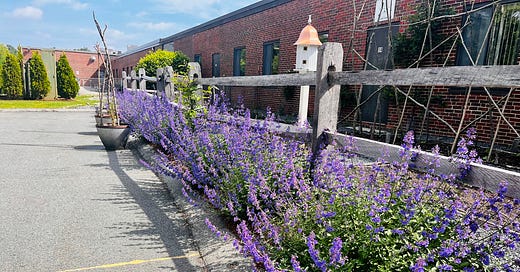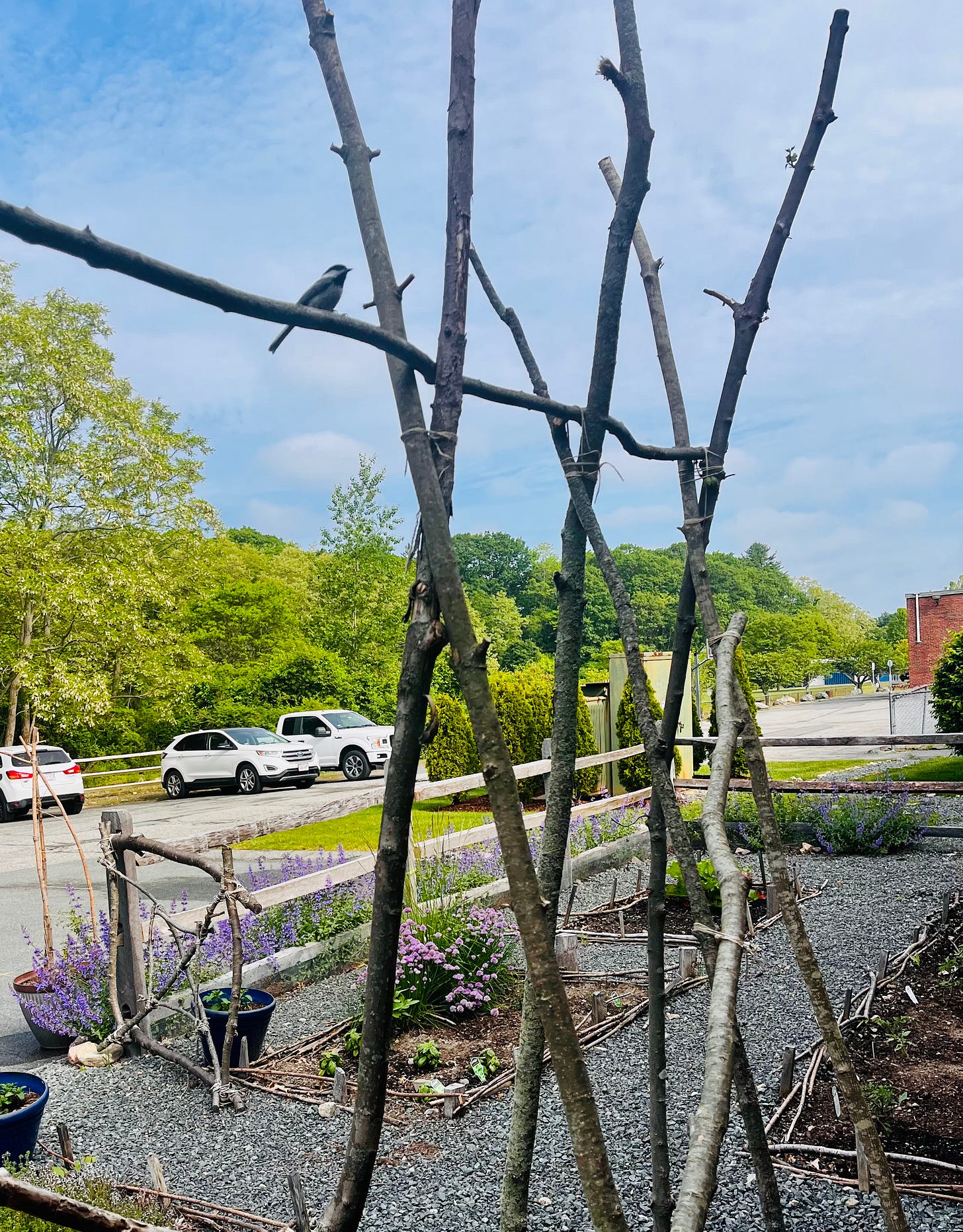Classical Roots is a free weekly newsletter. If you want to support the cause, the best way you can help us is to spread the word.
Well, it is the last week of school, sandwiched between school trips and the ragged bustle of awards ceremonies and end-of-year discussions. It is, in short, not a time amenable to good writing. I’ll admit to having fallen asleep on my porch in the sun yesterday when I should have been composing this month’s Garden Advice post. I will also admit to not feeling much regret about that. I will return to that regular schedule soon enough but, in the meantime, I thought I’d send a brief dispatch about what’s going on in the garden, particularly when it comes to birds.
Last year, I wrote a post articulating my desire to draw native birds back to the school’s campus. It turned out later that I had misidentified the bird I’d been writing about, but the sentiment remained unchanged. Since then, partly intentionally and partly by accident, I’ve had my eyes open to the stirrings of flying things here at CCA. Gardens have a strange way of welling up to a change all of a sudden, like floodwaters silently rising before a breach. This past Friday, still ragged from the school trip, I came to campus to get some work done in the relative emptiness and silence of the USLR wing of the building. I didn’t expect to arrive to a flood. But so I did.
In the absence of the typical gaggles of students, the birds were treating the campus as very much their own—which it is, for far more hours of the day than it is ours. In 2022, I can remember being moved, walking through the newly-planted orchard one fine spring morning, by the presence of a robin perched on one of the still-raw tree stakes that secured our apple saplings. It was the first bird besides a house sparrow I’d seen on campus in many years and, to my amateur naturalist’s heart, it had all the significance of the widow’s mite.
Friday morning, I stirred up robins aplenty as I walked the campus with my gurgling watering can. I even noticed one of them plucking grass from the orchard to build a nest in the shrubs just outside my classroom window. The omnipresent house sparrows were there too, of course. But these had been joined by newcomers. Within a half hour, I’d seen the shadow of a ruby-throated hummingbird investigating the coral honeysuckle vines I planted last year, watched a cluster of goldfinches streak over the lupins, noticed black-capped chickadees busy nesting in the lovely birdhouse in our vegitable garden and, most exciting of all, seen a red-tailed hawk rise on huge and quiet wings out of the orchard, a field mouse dangling in her claws. She alighted on a telephone pole that protrudes from the treetops near the back of the school, eyed me suspiciously, then took her meal to a more private venue in the trees.
What does any of this mean, especially to someone who doesn’t share my love of flying life? Well, birds are one of the surest indicators of life’s abundance in any given place. Their return to campus means that the foundational creatures they consume are thriving, which in turn indicates that the soil is healthy and the land healing. For the last century or so, mankind has been busy cutting itself off from all such messy indicators of reality in the world we inhabit. We’ve only lately—and far later than we should—started to admit not just the damage this separation has done to creation, but to ourselves. Friday morning buoyed my hope that, with a little effort, we can deepen the thriving of our school, both within and without.
If you enjoy what you’re reading here and want to support us, why not subscribe? It’s free to all and you’ll get access to our weekly posts, as well as a weekly subscriber-exclusive chat where we brag about our gardens and beg for advice. It’s the best way to support us.
Also: Tell me what you think! Your comments are part of what makes this program worth doing and this newsletter worth writing. If you have thoughts, advice, questions, or enthusiasm, let me know! Others are waiting to join the conversation.




